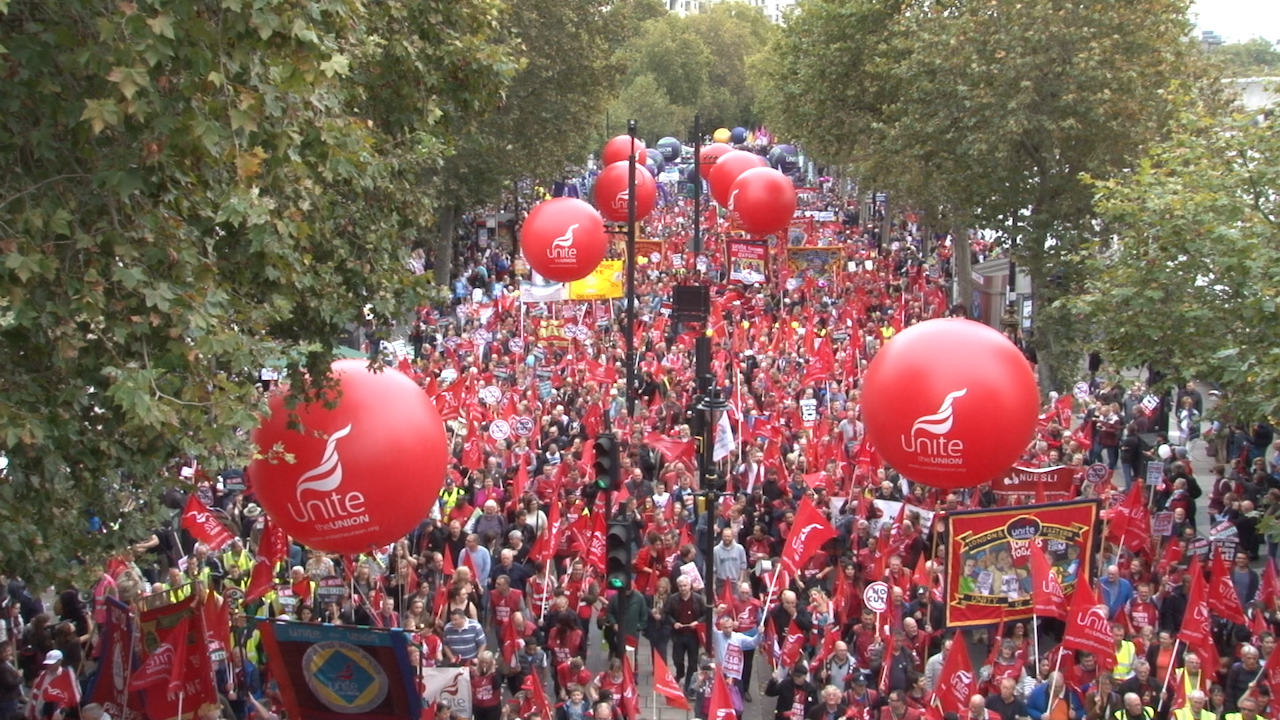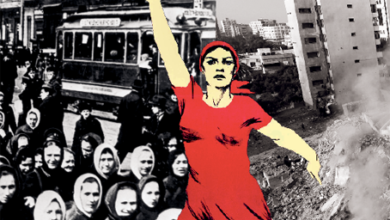Why the SNP is not an anti-austerity alternative for the Westminster elections

The electoral uprising against austerity and the political establishment witnessed during the independence referendum has transformed the political terrain in Scotland. In its aftermath we have seen the accelerated disintegration of the Scottish Labour Party, widely derided as the “Red Tories”.
Alongside this has been a mass influx into the SNP by tens of thousands of working class people seeking a way to continue the struggle, not only for independence but also against savage austerity. The vast majority of them, over time, will be bitterly disappointed by the actions of the SNP leaders who have absolutely no intention of doing anything other than continuing to make the cuts and defending the interests of capitalism.
The majority of the 1.6 million who voted for independence were part of an elemental, anti-austerity working class movement. Socialist Party Scotland understood that in the temporary absence of organised mass struggle through the trade unions and the lack of a mass workers party, the indyref would be a proxy. The mass politicisation that took place through the campaign – with the intervention of Project Fear driving the movement even further to the left – underlined the correctness of this perspective.
Following the referendum we called on Tommy Sheridan, who had reemerged from the referendum campaign as a mass figure, to help launch a new working class party in Scotland. There is no doubt that had this been done within a few days of the referendum, as tens of thousands were moving to join political parties associated with the Yes campaign, it would have grown rapidly. Instead, he rejected this option and called for a vote for the SNP. This undoubtedly led to thousands of working class and young people entering the SNP who could have been won to a new working class party. Tommy Sheridan is now effectively campaigning for the SNP in the run-up to the 2015 general election and Solidarity has been left in a greatly weakened position as a result
Will the SNP move left?
Will the huge influx into the SNP, 70,000 have joined since September 18, push the SNP leadership to the left? The SNP are now the third largest party in the UK, bigger than the UK Liberal Democrats. This is despite only organising in Scotland, which makes up less than 10% of the UK population.
However, there has not been any significant shift to the left, as yet, in the SNP’s economic programme. In response to the oil price collapse the SNP policy is to call for urgent tax cuts for the big oil companies. This echoes their longstanding neo-liberal policy in favour of the reduction of corporation tax in an independent Scotland to stimulate investment. Both the Scottish government and SNP-led councils are carrying out the cuts with barely a murmur of opposition. Nor have there been any moves by the new Nicola Sturgeon leadership towards support for even limited public ownership of the economy, not even of the hated energy companies. The tranche of SNP Westminster candidates are very likely to be dominated by the “safe and secure” as far as the SNP leadership are concerned. Added to this former SNP leader Alex Salmond intends to be at the head of a large block of SNP MPs in Westminster after the election.
While riding high in popular support just now, over time and through experience there will be a haemorrhaging of the newer membership from the SNP in disappointment and disgust at the leadership’s collaboration with austerity and their pro business policies. This will especially be the case were a new workers party to emerge from developments in the trade unions, possibly after the election. Open clashes between sections of the SNP membership and the leadership are also likely at a certain stage.
The SNP leadership were widely seen to have stood up against the onslaught of Project Fear and the capitalist establishment in Britain. The narrow No victory and the desperate promises by the Unionist parties of more powers for Scotland, albeit limited, have bolstered the SNP even further. They were largely credited with having shaken-up the political elite and providing through the indyref an outlet for anger against the crisis and austerity. Although even now there does exist a strongly critical layer of working class people who have no confidence in the SNP.
The strongly pro-SNP mood is reflected in the crop of opinion polls that have been conducted since October last year. The SNP lead over Labour in voting intentions for the May Westminster elections is between 10 and 24%.
In the seats where Labour has its biggest majorities in the West of Scotland, the swing to the SNP seems to even larger. This reflects the strong working class support for a Yes vote in cities like Glasgow which is translating into intentions to vote SNP to get rid of the “Red Tories”. 81% of those who voted Yes say they will vote SNP. Of the one-third of Labour voters in Scotland (those who voted Labour in the 2010 elections) who backed yes, almost 70% of them now say they will vote SNP in May 2015.
The mood to rid Scotland of Labour MPs is understandable and reflects the party’s degeneration into a party of big business interests, as we have explained on many occasions.
On the other hand we have to stand against the mood amongst a layer that the SNP represents a step forward in the struggle for working class representation and against the austerity supporting politicians.
While electoral support for the Trade Unionist and Socialist Coalition (TUSC) in Scotland will of course be squeezed under these conditions, it is vital that we put a marker down and reach as many working class people as possible with a real anti-cuts and socialist alternative. The role played by Tommy Sheridan in calling and campaigning for support for the SNP rather than build a fighting anti-austerity alternative, is all the more mistaken under these conditions.
An SNP/Labour coalition?
The SNP leadership have openly stated they are prepared to offer support for a Labour government at Westminster. As Nicola Sturgeon commented, “It’s a matter of record that after the last election we offered Gordon Brown the opportunity to put an alternative government together….something short of a coalition might be a better option – issue-by-issue support.”
The most likely option for the SNP if Labour cannot form a majority government is a “confidence and supply” arrangement that would allow the SNP to vote on an issue-by-issue basis for a Labour government, although a more formal coalition is not completely ruled out.
The Labour leadership would much prefer a coalition with the Lib Dems rather than having to deal with Alex Salmond and the SNP. The SNP leadership have outlined three demands for negotiation with Labour; the scrapping of a new generation of Trident, the end of “austerity” economics and more powers for Scotland. Of course what the SNP mean by an end to “austerity” is not spelled out. In power the SNP have implemented the cuts to the penny, including in Edinburgh and Dundee. Their own white paper clearly stated that cuts would continue under independence.
This would pose key questions for the SNP: would they vote for Labour’s budgets? If so, that would inevitably mean a continuation of austerity and other anti-working class policies. Were that to be the case it would mean the SNP being complicit in implementing further cuts and attacks on living standards. Even if a majority Labour government was elected, more devolved powers for Scotland are very likely. The fear of another independence referendum will leave the British establishment little option other than to make further concessions to Scotland.
The SNP leadership have dropped any idea of calling for a new indyref in the short term. “We are not campaigning for a second referendum – we’ve had a referendum, we want home rule now” stated Alex Salmond. The strategy of the SNP leadership will be to use their large bloc of MPs to extract concessions from an incoming Westminster government.
This does not mean a new referendum on independence is ruled out. If no further significant powers were devolved to Scotland then it’s possible that the 2016 Scottish general election could be fought by the SNP on a manifesto supporting a new referendum in the parliamentary term 2016-2021.
If another Tory government wins the election in May, this would increase the mood in Scotland for another referendum. A vicious anti-working class Labour government would also have a similar impact. A poll conducted in January 2015 found that 66% of people believe that Scotland will become independent. Of those almost half, 48%, think that independence will come within 10 years.
oil price shock
The collapse in the price of oil by over half since the summer of 2014 has had an impact on the SNP and support for independence. Scotland’s Future – the Scottish Government’s white paper on independence – based its projections on an oil price of $110 a barrel. Alex Salmond had predicted a “second oil boom” that would generate around £57 billion in oil revenues in the next six years. With the price now falling to $50 a barrel, Labour and the other pro-union parties have lost no time in seeking to exploit this to attack the SNP and the viability of an independent Scotland. Polling indicates that 22% of SNP supporters and Yes voters believe that the fall in the price of oil has weakened the case for independence. This has also pushed the SNP to publicly drop the call for another indyref in favour of “home rule.
TUSC against cuts
The growth in support for the SNP is based overwhelmingly on a desire by broad sections of the working class for a political alternative to the main establishment parties.
In that sense the SNP have temporarily filled some of the space that exists for a new mass workers party, which Socialist Party Scotland is fighting to see built.
However, a recent poll following the Scottish Labour leadership election saw more than one-third of those asked say they would be much more likely to vote Labour if the party committed to a programme of widespread nationalisation, including of the railways and the gas and electricity companies. A new mass workers party would find huge support by standing on a fighting left programme.
The rise of Syriza in Greece and Podemos in Spain, underlines the potential to build mass support for ideas to the left of not just Labour, but also the SNP as well. As Guardian columnist Ian Traynor pointed out: “There has been much talk in recent years of the challenge posed by the far-right populist movements…..But it is the hard left that is poised to make the breakthrough.”
It’s vital that we fight for this perspective in Scotland and stand against the idea that the SNP’s pro-business policies offer a way forward.
Many sections of the left in Scotland have gone along with a pro-SNP line, or adopted a policy of no or little criticism of the SNP, both during and after the referendum. The SSP proposed an “independence alliance” with the SNP, which leading SSP members unbelievably justified as an “anti-cuts alliance”. Yet it would have been an electoral bloc with a party that is carrying out vicious cuts in councils across Scotland. The SNP leadership turned down this “marriage of convenience”.
fighting coalition
In contrast Socialist Party Scotland has adopted a completely different approach. We have set out to build as wide a coalition as possible of trade unionists, socialists and anti-cuts campaigners prepared to challenge the parties of austerity, including the SNP.
TUSC, backed by the RMT union and leading trade unionists, will be demanding councils and the Scottish government refuse to make the cuts and set No Cuts budgets, linked to a mass campaign to demand the money from Westminster to fully find jobs and public services.
The initiative of Glasgow City Unison in writing to all Glasgow councillors and proposing a No Cuts budget for 2015/16 represents an important example to be used in other parts of Scotland. This letter was also signed the other unions, including Unite and helps make the case for principled anti-cuts candidates even more clearly.
The TUSC intervention in the general election will be crucial in popularising these fighting anti-austerity ideas, as well as a programme of public ownership, a living wage of £10 an hour and an end to the anti-union laws etc. TUSC in Scotland will be standing in at least 10 constituencies and at least 100 candidates across Britain as a whole.
The continued backing for TUSC by the RMT trade union is a very important pointer to the role other unions should play in forging a new political movement for the working class.
The TUSC campaign is also a vital marker for the 2016 Scottish elections and the 2017 local government elections, which are conducted under a form of PR. Both of these elections could see socialist and anti-austerity candidates elected.
With the SNP and Labour both committed to carrying out cuts, the task of socialists is to offer that real anti-cuts and socialist alternative to the parties of capitalism in the 2015 elections and beyond.
The Trade Unionist and Socialist Coalition is aiming to stand in 100 seats in Scotland, England and Wales in May at the general election. TUSC stands for:
- Opposition to all forms of privatisation, including PFI and PPP schemes and the Scottish Government’s alternative of PFI-lite
- The renationalisation of all privatised public services and utilities; rail, transport, energy and Royal Mail etc.
- Tax the rich and public ownership of the banks and big finance under democratic control
- For a £10 an hour living wage rising with inflation or wages, whichever is higher
- No to all cuts. For all councils and the Scottish Government to set No Cuts budgets and fight for the resources to fully fund public services
www.tusc.org.uk for more info



